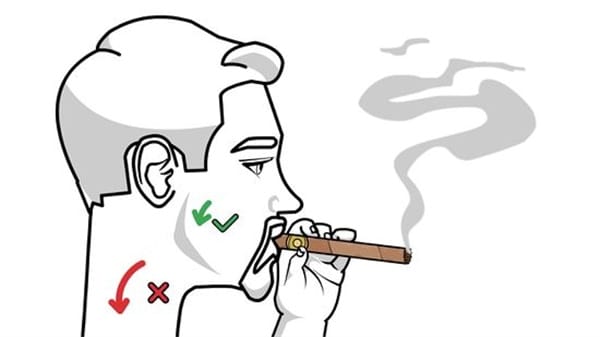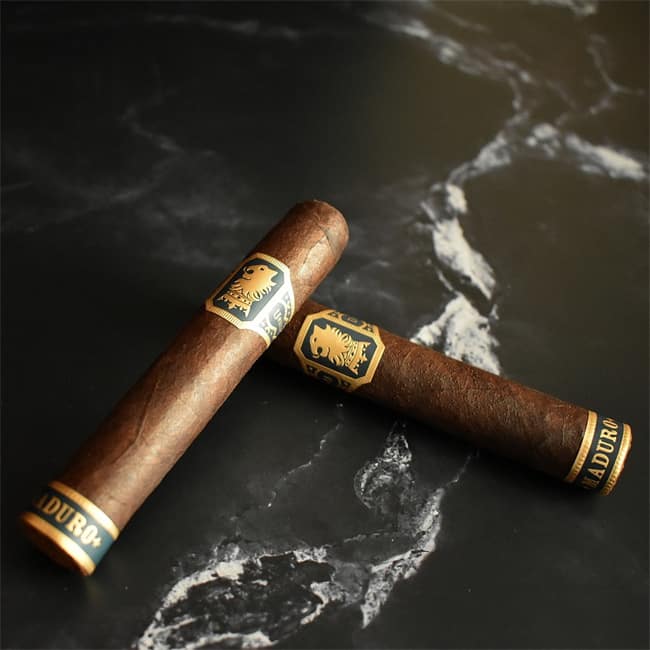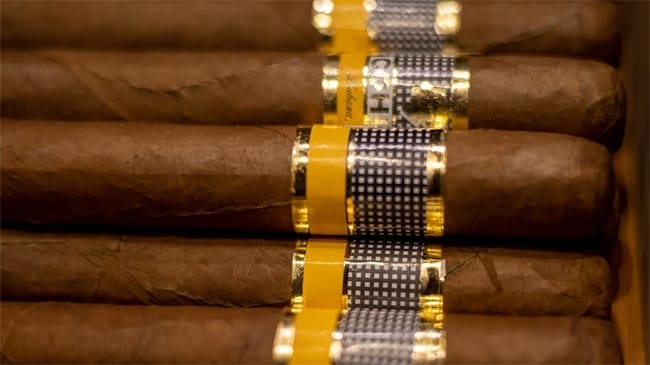Filler, Wrapper and Binder: Cigar Parts
Welcome to the interesting world of cigars! Knowing the different Cigar Parts is like finding out secrets about your smoking. Each part, from the Filler to the Wrapper and Binder, is important for the taste and fun of your cigar. Let’s examine the key parts that make up every cigar you enjoy.
What is a cigar made of?
We need to look at its parts to know what makes a cigar. A cigar has three main parts: filler, binder, and wrapper. Let’s see what each part does:
- Filler: The filler is the middle part of the cigar. It gives most of the flavor and size. It’s made of packed leaves that affect how the cigar tastes and smokes.
- Binder: The binder holds the filler together. It helps keep the shape and works with the wrapper to strengthen the cigar.
- Wrapper: The wrapper is the outside layer of tobacco. It covers the binder and filler, giving cigars their look and taste.
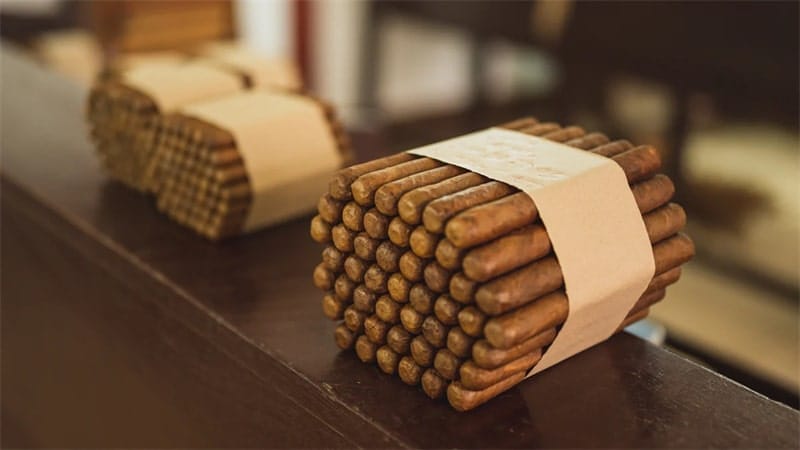
Cigar Fillers
Let’s explore Cigar Fillers! Knowing about fillers can make smoking cigars more fun. There are two main types: long fillers and short fillers.
What are long fillers?
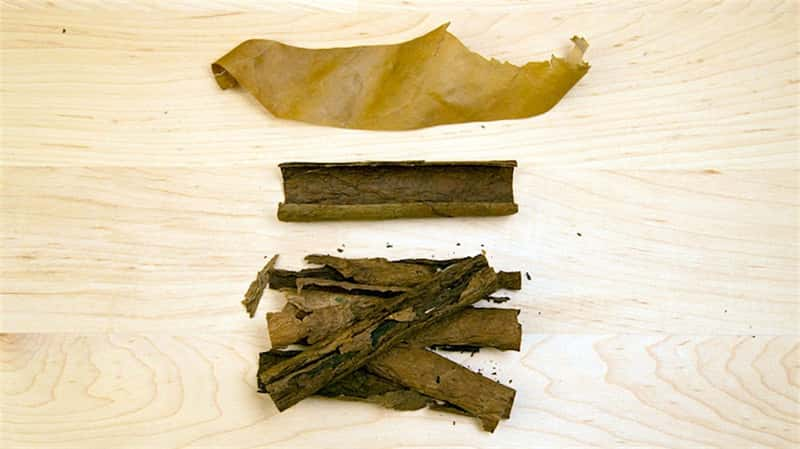
Long fillers, or “long leaf” fillers, are whole tobacco leaves. They go the full length of the cigar. These leaves burn smoothly and evenly. They give a rich cigar flavor. Long fillers are picked for their high quality. You find them in fancy cigars.
It burns slower and takes longer to finish a cigar.
What are short fillers?

Short fillers, called “mixed-fill” or “Cuban sandwich” fillers, use chopped tobacco leaves. These pieces aren’t all the same size. Short fillers cost less and are used in machine-made cigars or mixed with long fillers in handmade ones. They burn faster and might taste stronger than long fillers.
Cigar Wrappers
Wrappers are like the fancy clothes of a cigar. They are the outer layer you see and taste first. Cigar Wrappers come in many colors and textures. Each one adds its own flavor to the cigar. Let’s look at some types of wrappers: Shade-Grown Wrappers, Maduro Wrappers, and Connecticut Wrappers.

- Shade-Grown Wrappers: These grow under tents, away from direct sunlight. This makes them smooth and mild.
- Maduro Wrappers: These dark wrappers get their color from extra fermentation. They often taste sweet or like chocolate.
- Connecticut Wrappers: Known for their light color and silky feel, they give a creamy and mellow flavor.
Next time you smoke, notice the wrapper—it might surprise you!
Cigar Binders
Cigar Binders are like the glue in a cigar. They keep the filler leaves together and help the cigar hold its shape.
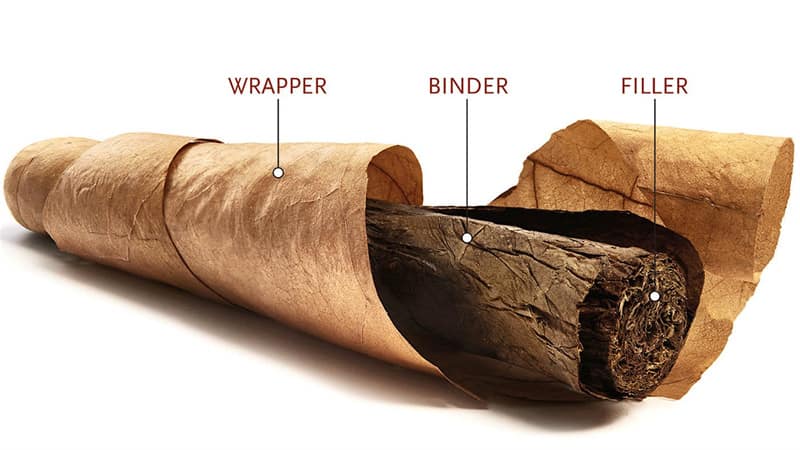
- Function: Binders keep the filler leaves in place. They help the cigar stay together when rolled and smoked.
- Types: There are different kinds of binders, each with special traits. Some are strong and make smoking better.
- Impact on Flavor: Binders don’t add much flavor but still affect taste a bit. Good binders help keep the filler flavors nice.
- Blending: Mixing binders with fillers is an art. Getting the right mix makes a tasty cigar.
- Structural Support: Binders also give support to the cigar. They stop it from falling apart while you smoke.
Other cigar parts
Head of Cigar
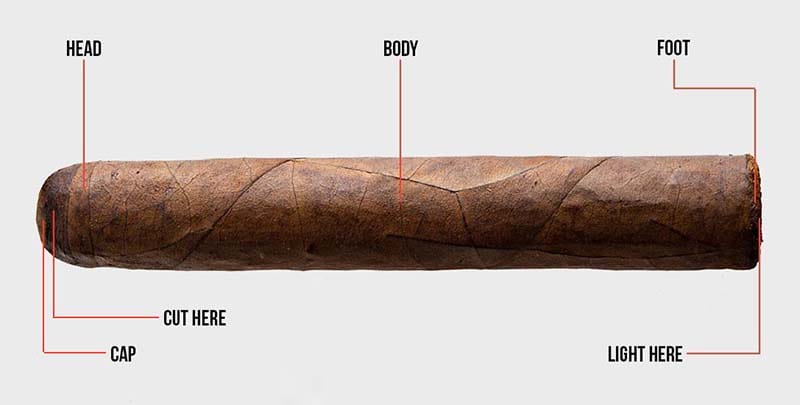
When exploring the Head of Cigar, we delve into the starting point of this flavorful journey. This part is where the magic begins, setting the stage for your smoking experience. Let’s uncover what makes the head of a cigar unique:
- The Cap: The cap is like a crown on the head of a cigar, carefully placed to seal and finish it off. It protects the cigar and ensures a smooth draw.
- Cutting: Before enjoying your cigar, you need to cut its head. This step is crucial as it opens up the flavors and aromas waiting inside.
- Preparation: Properly preparing the head ensures an even burn and a satisfying smoke. Taking care when cutting and lighting sets the tone for your entire cigar session.
Body of Cigar
The body of a cigar, also known as the barrel, comprises the entire structure of the cigar, including the key components that determine its flavor, burn, and overall smoking experience.
Wrapper: The outermost leaf that gives the cigar its appearance and contributes significantly to its flavor. Wrappers can be Natural (lighter in color) or Maduro (darker in color), and their quality and origin play a crucial role in the cigar’s taste.
Binder: The layer of tobacco that lies just beneath the wrapper. It helps maintain the cigar’s structure and ensures a smooth, even burn. The binder also influences the flavor to a lesser extent than the wrapper.
Filler: The innermost part of the cigar, consisting of tightly packed tobacco leaves. The filler determines the strength, complexity, and flavor profile of the cigar. There are two types of filler: long filler (whole leaves) and short filler (chopped leaves).
Foot of Cigar

The foot of a cigar refers to the end that you light.
Lighting the Foot: The foot is the part of the cigar you light. Properly toasting the foot before fully lighting ensures an even burn and enhances the overall smoking experience.
Types of Foot:
Regular Foot: The most common type, open and ready to light without special preparation.
Shaggy Foot: The wrapper leaf does not cover the binder and filler at the foot, allowing the smoker to taste the binder and filler separately at the beginning.
Closed Foot: The wrapper leaf covers both ends, focusing the initial flavor on the wrapper. It can make lighting more challenging but provides a unique flavor experience.
Judging the quality of cigars by their parts
To judge the quality of cigars, consider the following key components:
Wrapper: The outermost leaf, contributing up to 60% of the cigar’s flavor. A high-quality wrapper should be smooth, blemish-free, and evenly colored.
Binder: This leaf encases the filler tobaccos and maintains the cigar’s structure. It should be strong and contribute to an even burn.
Filler: The cigar’s core is made up of various tobacco leaves. A good filler offers a well-balanced flavor profile and a smooth draw.
Cap: The small piece of tobacco that seals the head of the cigar. A well-constructed cap ensures an easy cut and a good smoking experience.
Foot: The end of the cigar that is lit. A properly prepared foot ensures an even burn and a smooth start.
Aroma and Taste: High-quality cigars should have a pleasant aroma and a balanced flavor profile with various notes such as earthiness, sweetness, and spice.
FAQ
Which parts of a cigar affect the taste of the cigar
The Filler: This middle part has tasty leaves. It makes your cigar flavorful. It’s like the heart, giving most of the taste you enjoy.
The Wrapper: This outside layer looks nice and adds flavor too. Different wrappers bring different tastes to your smoke.
The Binder: This part holds everything together. It doesn’t add much flavor but keeps the cigar balanced and nice to smoke.
How to make the cigar taste better
Proper Storage: Keep your cigars in a humidor with a consistent humidity level of 65-70% and a stable temperature around 65-70°F. This helps preserve and enhance their flavors over time.
Aging: Aging cigars can mellow harsh edges and bring out deeper, more nuanced flavors. This process can take several months to years, but the results are worth the wait.
Slow Smoking: Puff slowly and allow the smoke to linger in your mouth to fully appreciate the evolving flavors. This also prevents the tobacco from overheating and tasting burnt.
Use Your Nose: Combining smell and taste is crucial for fully experiencing a cigar’s flavors. Pay attention to the aroma as you smoke
What is the end of a cigar called?
Ever wondered what we call the end of a cigar? It’s known as the foot. This part wraps up your smoking journey, leaving a lasting impression on your senses.
What is the lit part of a cigar called?
The lit part of a cigar is called the “foot.” This is the end of the ignited cigar and from which smoke is drawn. The glowing part of the foot, where the cigar burns, can also be referred to as the ember or ash
What is the most important part of a cigar?
The most important part of a cigar is often considered the wrapper. The wrapper is the outermost leaf that envelops the interior tobacco and can account for up to 60-70% of the cigar’s flavor and overall smoking experience. This component is crucial in determining the cigar’s taste, aroma, complexity, and mouthfeel.

